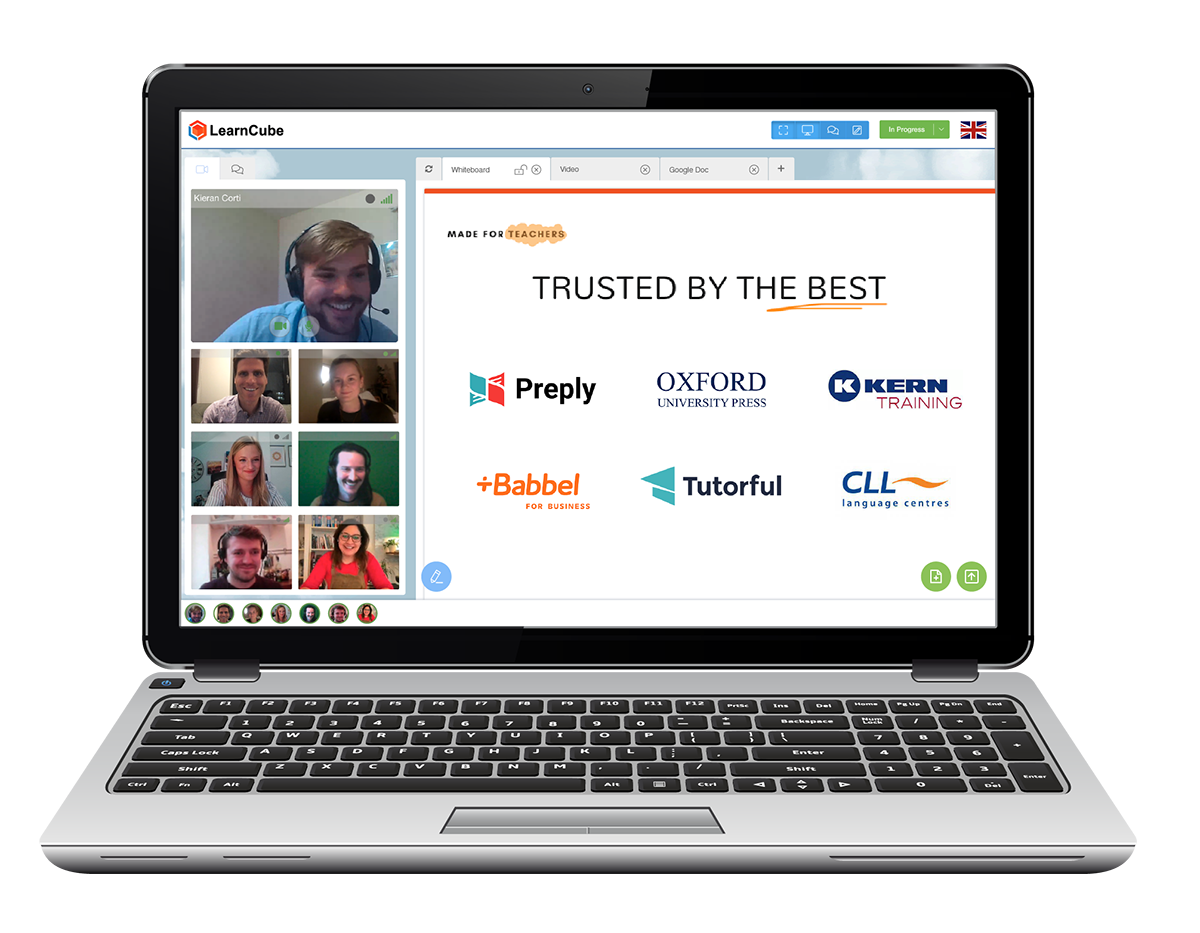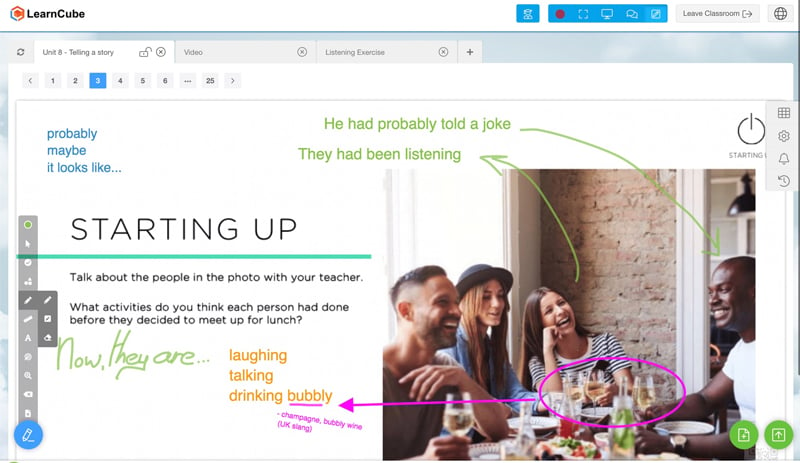A virtual classroom is an online learning environment that allows teachers and students to communicate, interact, collaborate, explain ideas.

A virtual classroom enables students to access quality teachers anywhere on the planet so long as they both have a reliable internet connection. This can break down most of the common barriers to synchronous learning: cost, distance and timing.
- Video conferencing (so teachers and students can see each other)
- Audio conferencing(so participants can hear each other)
- Real-time text chat
- Interactive online whiteboard (so users can interact on the same page).
- Library of learning materials (essential for providing more structured lessons)
- Teacher tools and controls (just like in a physical classroom)
How different is a virtual classroom to a physical classroom?
In many ways, an online classroom simply mirrors the physical classroom. In a physical classroom, the student needs to be able to see & hear the teacher, see & hear the other students, have a good view of the whiteboard and their own learning materials.
In a virtual classroom, a student can see & hear the teacher via the video/audio stream. The online whiteboard allows teachers to explain ideas visually and work through exercises collaboratively.
How different is a virtual classroom to a web-conference?
An online classroom tends to have the important features of a video-conferencing tool but with additional features important for teachers.
The key features that transform the teaching and learning experience are:
- Interactive online whiteboard
- Library of learning materials
- Teacher tools and controls
1 Interactive online whiteboard
A web based whiteboard is important because it provides a shared focus point and enables teachers and students to collaborate on learning projects. Teachers can structure their lessons by embedding learning materials (pdf, video, audio files) directly into the whiteboard.
A whiteboard helps teachers and students get "on the same page". Rather than annotating (like writing on an interactive overlay), students can write/type/draw on the actual page and typically save for future review.
Embedding saved materials into the whiteboard enriches the learning experience, encourages student participation, makes it more efficient for teachers to switch between related concepts, engages more of the learner's senses and is just more fun. These are all important aspects of a "student-centered" learning approach, proven to be more effective than the old-school "instructor-led' pedagogy.
In contrast, most web-conferencing software, encourages "screen-sharing" or the condition commonly referred to as "death by PowerPoint". If students wanted a lecture, they would watch the video at their convenience. Educators need to facilitate and inspire learning which requires a more sophisticated view of online education.

2 Library of learning materials
In a physical classroom, you can look around and find textbooks, games, exercises, templates, worksheets, multimedia resources (print, video, audio).
A professional teacher needs these in their virtual classroom too. The teacher needs to be able to upload their digital learning materials to the cloud and save them for future classes.
This helps teachers prepare for a class in less time and provide a more structured, effective class. Most importantly, an online classroom will enable a student and teacher to get on the same page.
For example, the teacher can navigate to the exact page in a particular document or even open a video-resource. The virtual classroom software will ensure the student is on the same page in that pdf or can sync the video playback.
3 Teacher tools and controls
When a teacher is in a physical classroom they can use physical location, proximity and non-verbal body language to control the class. What about in an online classroom though?
A good online classroom typically includes a number of important controls for the teacher:
- Teacher tools - Text tool, draw tool, eraser, shapes, pen colour, zoom
- Specialist teacher tools - Maths tools, instant dictionary, instant verb conjugation tables
- Save or record the class or save learning materials for the student to later review
- Group class tools - Raise hand tool, breakout rooms for larger groups
- Control of the student webcam- Helpful if the student has a poor connection and needs to reduce internet bandwidth requirements
- Control of the student mic - Yes, that means you can finally "mute" your student when required
Virtual classroom summary
For the same reason that in-person teachers prefer to teach in a physical classroom, rather than a bedroom; a professional online teacher prefers to teach in a virtual classroom.
A virtual classroom has the aspects of web-conferencing needed to communicate effectively from opposite sides of the globe (video/audio conferencing, chat) and also a virtual whiteboard, library of resources and teacher tools.
The online whiteboard enables teachers and students to interact much more collaboratively and not just rely on video/voice.
The saved library of learning resources enables teachers to access relevant, rich or structure lesson materials instantly to create a much more dynamic class.
Teacher tools empower a teacher to control the class and be much more effective online. If you'd like to see a virtual classroom in action, you're welcome to try ours for free here.
